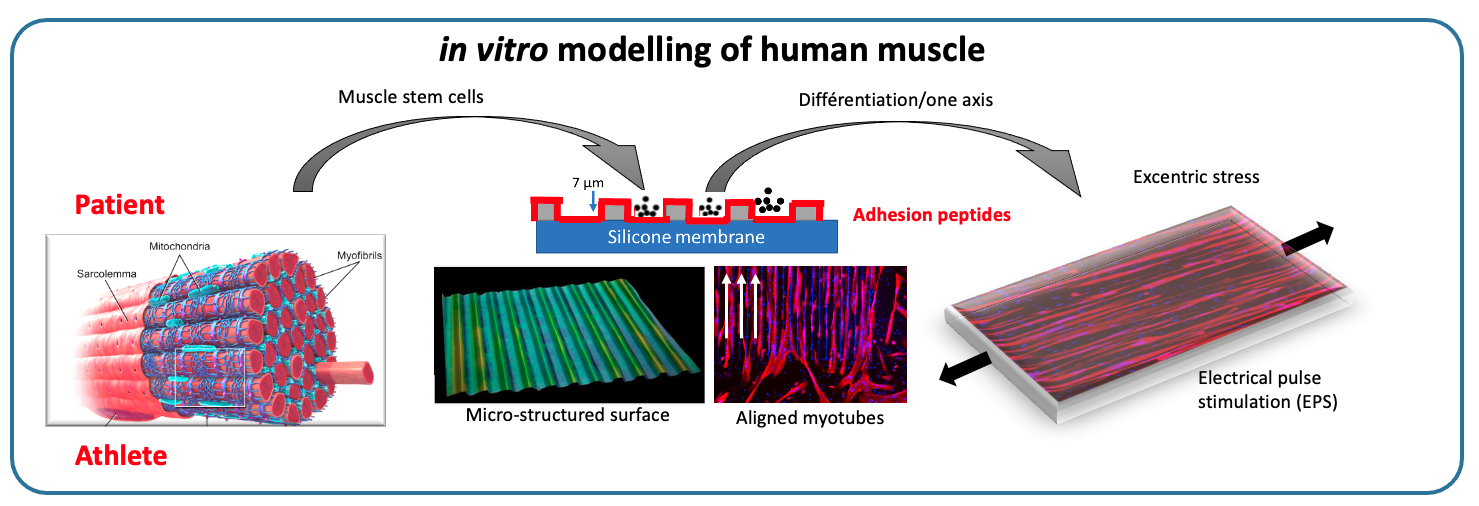Research program : Acquired Myopathies in Patients with Organ Deficiencies
Home > Team 2 > Research program > Axe 2
Modelling of acquired myopathies
The objective of axis 2 is to develop and study different models of acquired myopathies, in vitro and in vivo. We are thus setting up an in vitro model based on the isolation of muscle stem cells from patients, which will make it possible to evaluate the biological function as well as the organogenesis capacities of muscle cells. It will also make it possible to evaluate the in vitro impact of alterations of the microenvironment and of the physiopathological events involved in these acquired myopathies. This requires the development of flexible and biofunctionalized surface micro-structuring tools to optimize the differentiation of muscle stem cells on a single axis. In addition, we also want to implement other strategies (co-cultures, culture on 3D support, etc.), ultimately aiming to reproduce a skeletal muscle organoid.
This model, in relation to the donor phenotype evaluated by axis 1, will make it possible to determine the involvement of different stresses reproduced in vitro (mechanical, inflammatory or metabolic stress) in the etiology of the acquired myopathy. It will also allow axis 3 to identify cellular pathways of interest and to develop new therapeutic strategies. Different active biomolecules will thus be tested initially for their ability to improve muscle regeneration in vitro. The cellular pathways of interest and the active biomolecules will then be evaluated in a second step in animal models (rodent or pig) of myopathy induced by organ deficiency, several of these models being already mastered by the team (Jung et al, 2010; Mrozek et al, 2012; Dridi et al, 2020).


